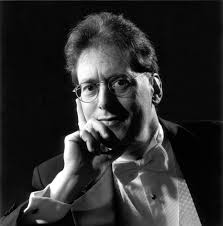Mozart Requiem Housekeeping
Last week I wrote about a conductor’s biggest decision, in planning a performance of Mozart’s Requiem: which edition/completion? But there are other choices to be made, as well. Pitch level: it is thought that A equaled approximately 424 in Mozart’s time—about a quarter tone above what we now accept as baroque pitch (A=415), and a quarter tone lower than accepted modern pitch (A=440). These numbers were somewhat approximate and variable in their own times, as they are now—modern orchestras, for instance, seeking greater brilliance and excitement, edge up toward A=450, and even higher (much to the consternation of singers, especially tenors and sopranos, who are thus forced to sing higher than the composer intended, and cannot simply tighten the pegs on their voices). As a practical matter, instruments, and players, are available to play at several different levels; but they are rare, and not just waiting down the street; a presenting organization has to be willing to spend a lot of money to import such players with their instruments. The most difficult such instrument to account for is the continuo organ—instruments now are commonly built to be transposable between modern and baroque pitch, due to the burgeoning popularity of historically informed performance (HIP), but an instrument that is easily transposable to A=424 is rare; and it is difficult, and dangerous for the instrument, to manipulate such tuning on an instrument not built for it.
This adds up to lots of money and complication, and increased risk of failure. Chicago Chorale performs as authentically as our forces and finances allow: we present our Baroque oratorios at A=415 and import appropriate players and instruments if they are not available locally. But an A=424 Mozart Requiem is beyond our means. So we will perform it at A=440, with modern instruments which play in authentic classical style.
 Latin pronunciation: traditionally, American choral ensembles have pronounced Latin according to Roman ecclesiastical rules. HIP, in addition to introducing us to a wider variety of pitch levels and instruments, introduced us to national and chronological variations in Latin pronunciation. This can be an incredible can of worms for a larger chorus: which Latin this time—German, English, French, Italian? And is it the Latin of the 15th century, the 18th century, or the 21st century? And do we really know the specific practice for which the composer was setting his text? This is especially problematic with Austrian music, sandwiched as it is between German and Italian practice, both geographically and religiously. The majority of my experiences with
Latin pronunciation: traditionally, American choral ensembles have pronounced Latin according to Roman ecclesiastical rules. HIP, in addition to introducing us to a wider variety of pitch levels and instruments, introduced us to national and chronological variations in Latin pronunciation. This can be an incredible can of worms for a larger chorus: which Latin this time—German, English, French, Italian? And is it the Latin of the 15th century, the 18th century, or the 21st century? And do we really know the specific practice for which the composer was setting his text? This is especially problematic with Austrian music, sandwiched as it is between German and Italian practice, both geographically and religiously. The majority of my experiences with  Mozart’s Requiem were under the baton of Helmuth Rilling, who insisted on modern German pronunciation (even this has variations in it, and Helmuth’s pronunciation reflected his Swabian origins). But Robert Levin, who authored our completion of the Requiem, was often present for Helmuth’s rehearsals, and invariably begged to differ with his choice. He based his own opinion on North/South, Protestant/Roman Catholic issues: Salzburg and Vienna were Catholic cities, with Italian voice teachers and vocal style, implying, for Levin, that linguistic practice would have been Italianate. Mr. Rilling politely ignored Mr. Levin, and we pronounced the text according to German practice; but I have decided, for our coming performance, to go 100% Levin, and use the Italian pronunciation.
Mozart’s Requiem were under the baton of Helmuth Rilling, who insisted on modern German pronunciation (even this has variations in it, and Helmuth’s pronunciation reflected his Swabian origins). But Robert Levin, who authored our completion of the Requiem, was often present for Helmuth’s rehearsals, and invariably begged to differ with his choice. He based his own opinion on North/South, Protestant/Roman Catholic issues: Salzburg and Vienna were Catholic cities, with Italian voice teachers and vocal style, implying, for Levin, that linguistic practice would have been Italianate. Mr. Rilling politely ignored Mr. Levin, and we pronounced the text according to German practice; but I have decided, for our coming performance, to go 100% Levin, and use the Italian pronunciation.
So many choices…
